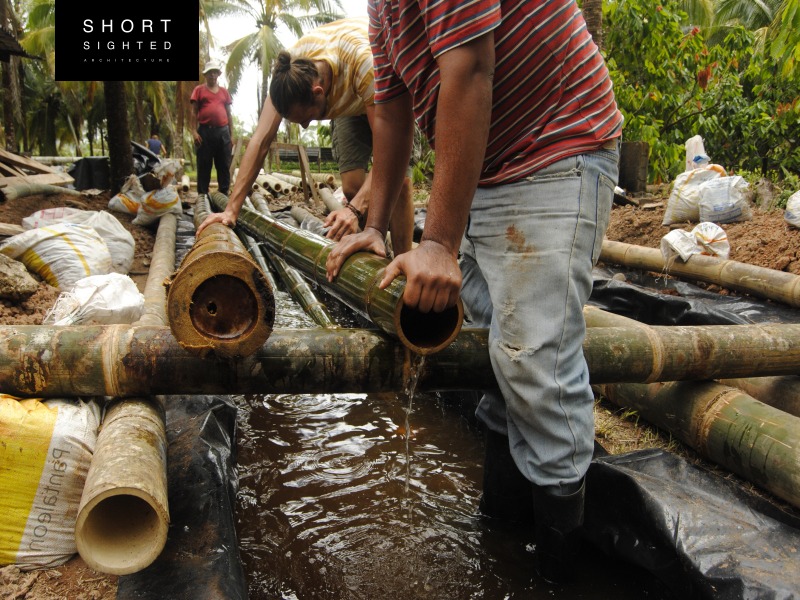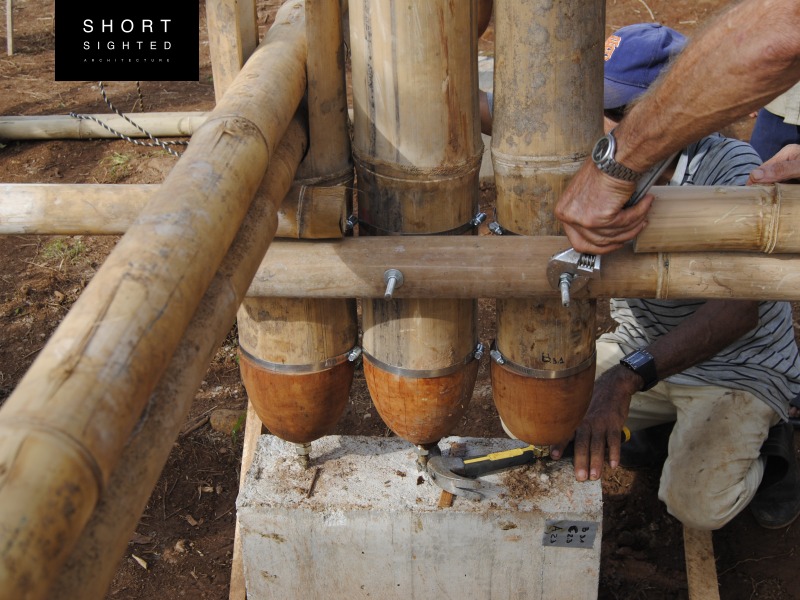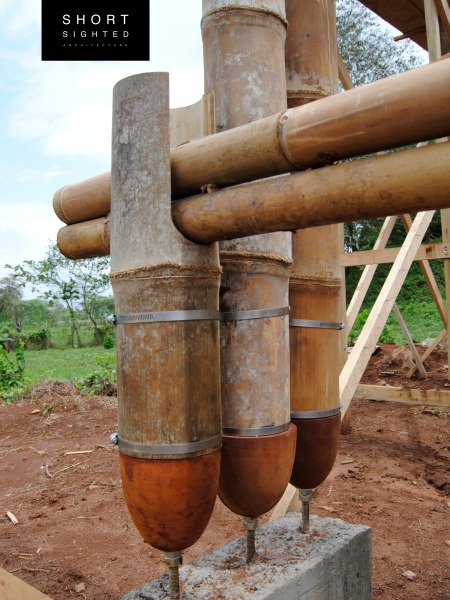image: Shortsighted Architecture |
 some rights reserved
some rights reserved#GC2022 is accepting submissions - 25d 27h 05m 44s
 some rights reserved
some rights reservedThe team of BAMBÚ SOCIAL has designed a pilot for sustainable social housing in El Rama, Nicaragua, developing a building method by the use of the widely available resource bamboo. This building method can be practiced in a completely local manner: from the production and treatment of bamboo to the execution of bamboo pre-fab elements that can be used in local construction. A model house has been constructed with an integrated decentralised, low-tech and natural water purification and storage system in order to provide clean drinking water for the inhabitants of the house. The model house acts as a library for the students and professors of the local university, the BICU (Bluefields Indian and Caribbean University).
Nicaragua is mainly an agrarian society, in which the harvesting of crops such as coffee and tobacco is the main drive of the economy. It is known to be the poorest country in Central America, as almost half of the people live below the national line of poverty. Studies have made evident that Nicaragua has the poorest quality of housing in the whole of Latin America, with a housing shortage of 12% (IDB, 2012). The high costs for building, the use of poor construction materials, and the lack of infrastructural access all contribute to the housing problems. Furthermore, in many rural areas like El Rama, there are serious issues in the supply and quality of clean drinking water.
Two different species of bamboo are used for the model house: Dendrocalamus Asper and Bambusa Gigantochloa. These two species are used for different functions in the construction, as they have different characteristics. They also require their own processes for cutting, treatment and preparation.
The Dendrocalamus Asper is known as the giant bamboo, and its weight and size make it difficult to work with it yet perfect for building a strong construction. The bottom part of this specie is used for the structural columns of the house, and upper and thinner parts of the bamboo are used for divisions and walls by making them into strips and ‘esterillas’ (crushed bamboo mats). The Bambusa Gigantochloa is thinner, making it much easier to work with. This specie is used for beams, rafters and bracing.

 some rights reserved
some rights reserved
 some rights reserved
some rights reserved
 some rights reserved
some rights reservedNicaragua is a country of great biodiversity, and is known as the “Land of Lakes and Volcanoes”. As it lies close to two fault lines, earthquakes and volcanic eruptions are frequent. Earthquakes have often wreaked havoc across the country, causing poorly built houses to collapse. In order for a building to hold its own in the face of an earthquake, it has to be made of materials that are flexible yet sturdy. Bamboo contains both qualities and is therefore resistant to the tremors.

 some rights reserved
some rights reserved